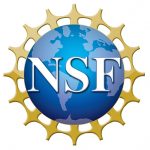About FishTRACS
What is FishTRACS?
Many nearshore reef fishes in California have a bipartite life history, which means that after their eggs hatch, larvae spend weeks or months drifting on the ocean currents before settling down to a more sedentary lifestyle as juveniles and adults. But exactly how far these larvae travel during their pelagic stage is one of the great remaining mysteries of marine ecology. Using cutting-edge genetic techniques that allow us to match parents with newly settled juveniles, we will be investigating the larval dispersal patterns of kelp rockfish in Carmel Bay and around the Monterey peninsula. We ask questions such as:
Do kelp rockfish larvae born in marine protected areas (MPAs) replenish fished populations in nearby areas?
Do kelp rockfish larvae born in marine protected areas (MPAs) replenish populations in nearby MPAs, contributing to the state-wide network of MPAs?
Does dispersal from Carmel Bay to Monterey Bay predominantly occur as the result of wind relaxation?
Is there evidence for local retention of larval kelp rockfish within the study region?
Is the relative recruitment of recently settled kelp rockfish to focal sites in the study region proportionate to the relative larval production of those focal sites?
Support:
Support for this project is largely provided by the National Science Foundation (NSF) (Award # 1260693: Integrative evaluation of larval dispersal and delivery in kelp rockfish using inter-generational genetic tagging, demography and oceanography). Additional support critical to the success of the project was provided by the California Department of Fish and Wildlife, Nordic Naturals, and West Marine.
Significance:
Eventual expansion of our methods and approach to multiple species and geographic regions, coupled with population sustainability models under development for this region, will allow managers a more comprehensive view of the extent to which MPAs conserve and replenish coastal marine species and their fisheries. Thus, our proposed methodology will provide an approach for other researchers in the field to directly test hypotheses on larval retention/dispersal in a wide array of marine organisms. This approach could have global application to the design and management of MPA networks and fisheries.
Approach:
FishTRACS brings together ecologists, geneticists, statisticians and oceanographers, who provide expertise and data regarding three key elements – population demography and field sampling, mark/recapture data from genetic tags, and empirical and model-based evaluation of oceanographic processes – to increase understanding of biophysical processes underpinning patterns of larval dispersal. Click below for approaches to each part of the FishTRACS project:
